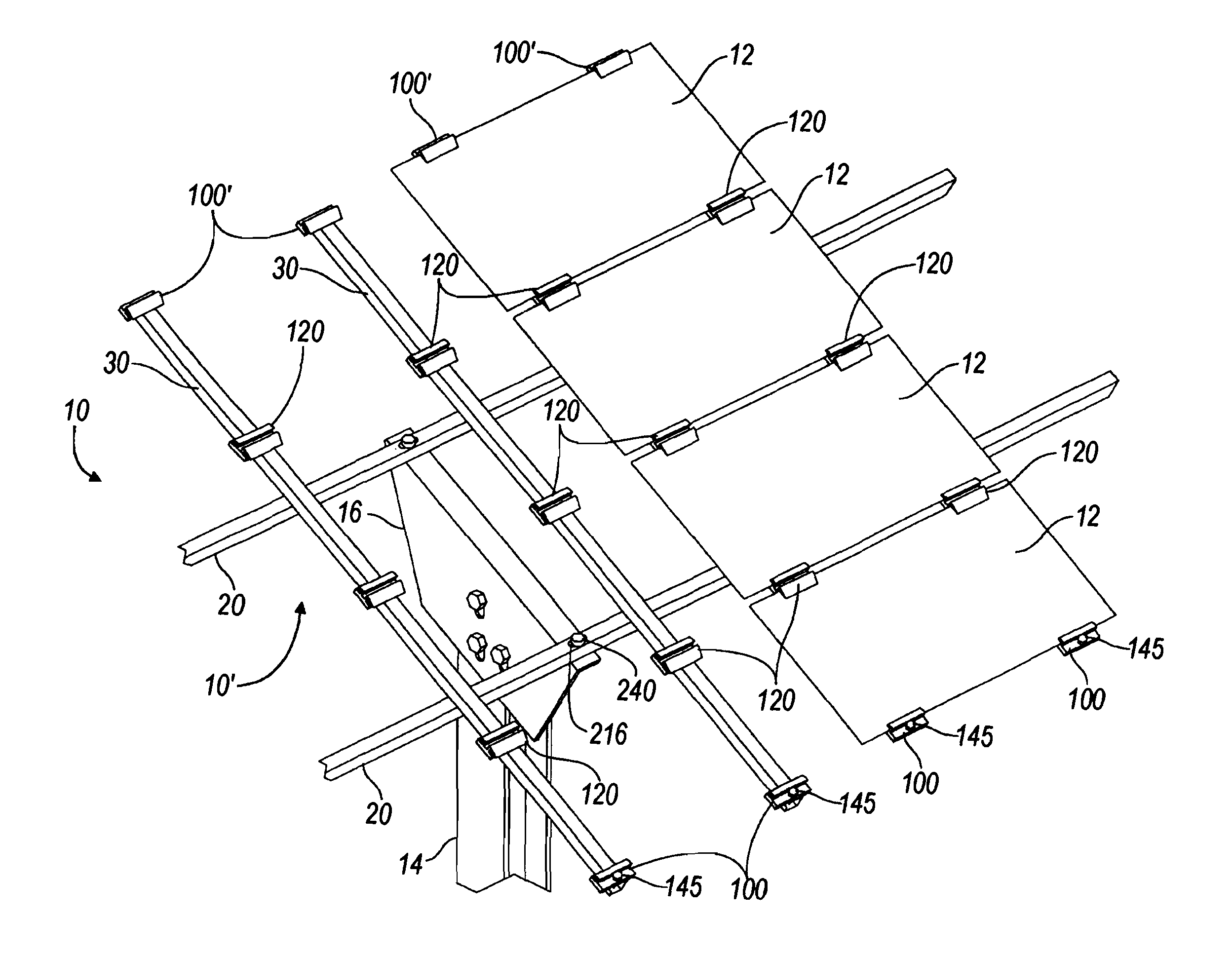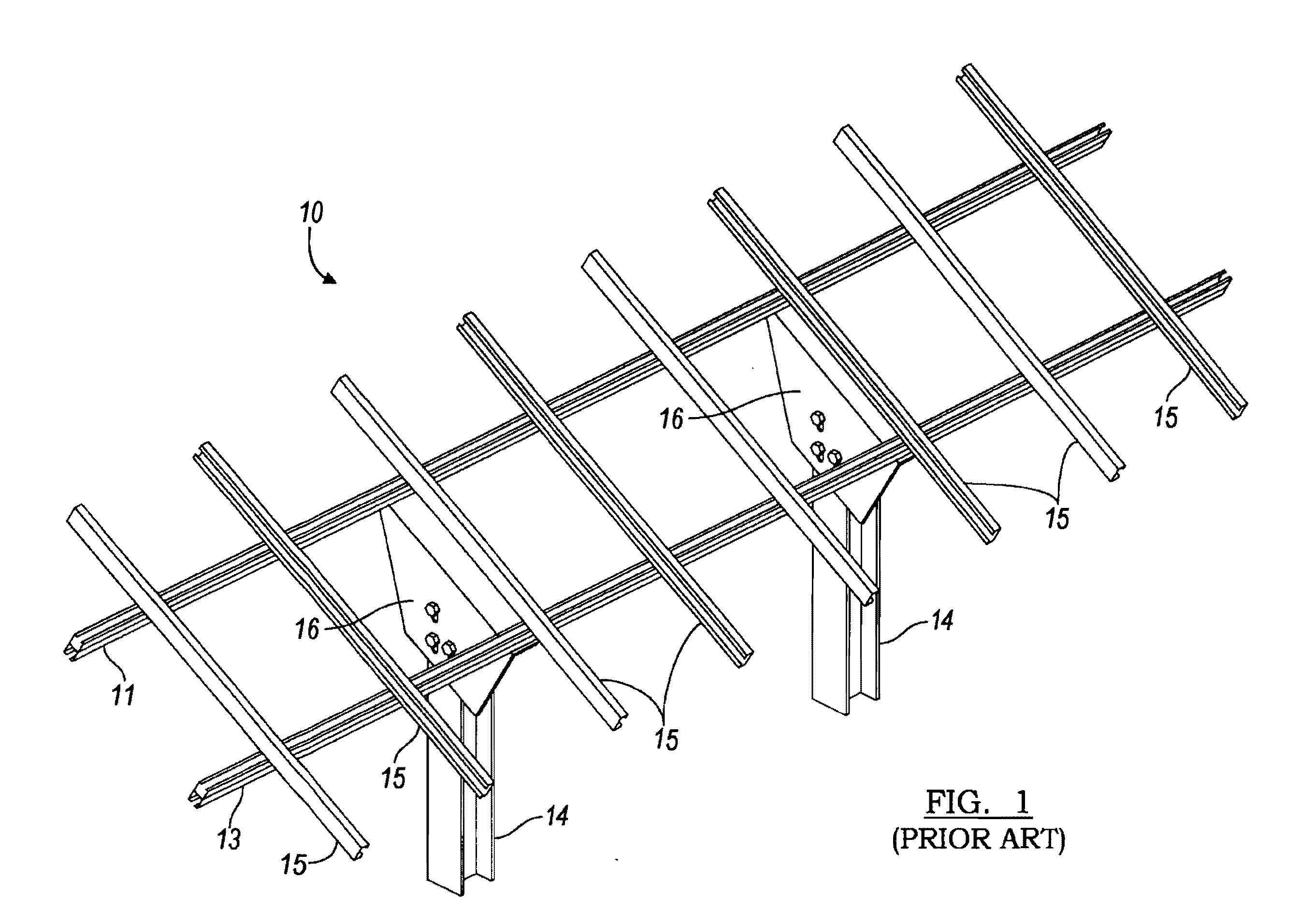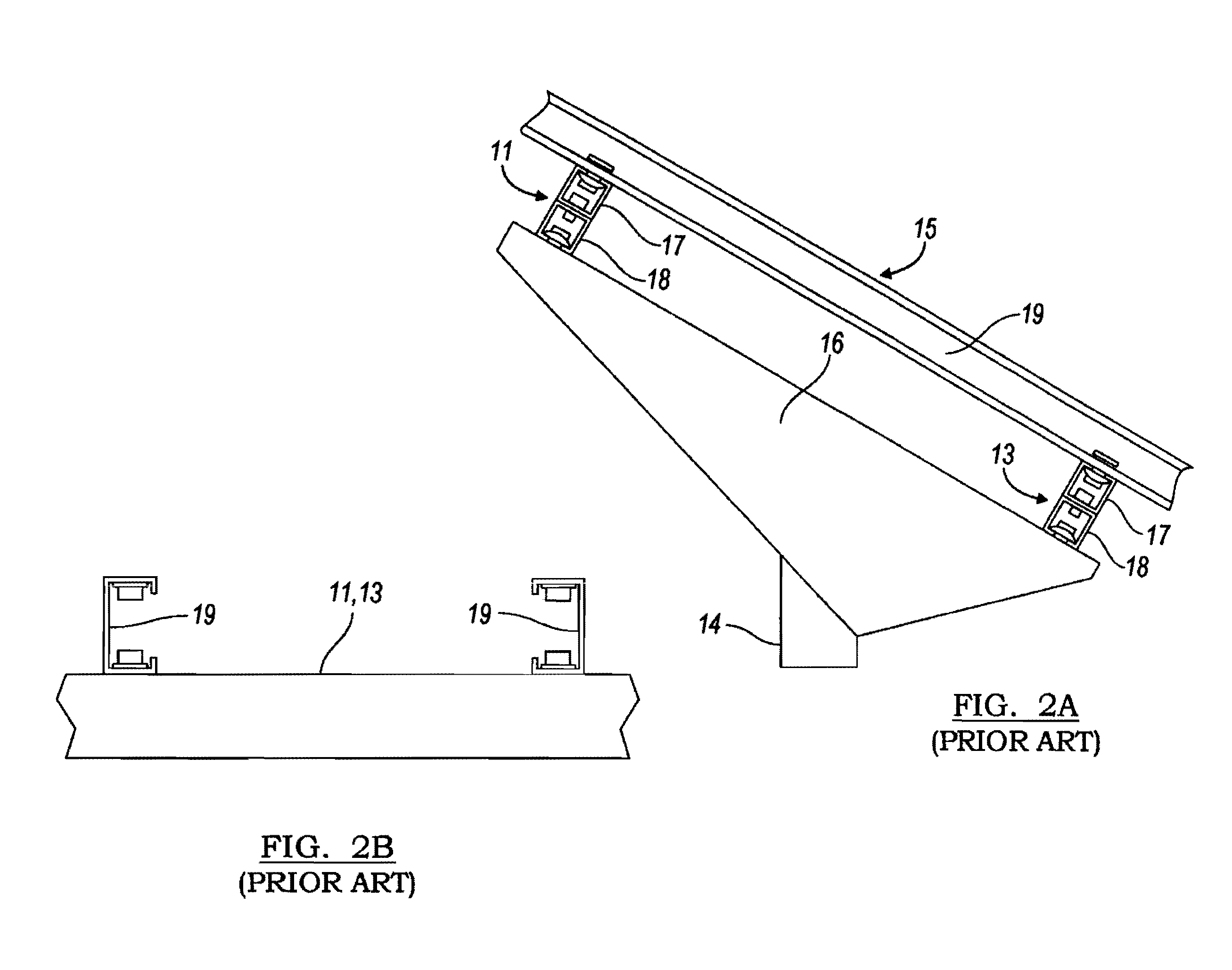Support system for solar panels
a solar panel and support system technology, applied in the direction of solar thermal energy generation, solar heating energy, heat collector mounting/support, etc., can solve the problems of unstable panel mounting, poor structural quality, and difficult installation of solar panels on the support structure, so as to facilitate both temporary and permanent placement of wires, facilitate protection of long cable runs, and facilitate the effect of flexibility
- Summary
- Abstract
- Description
- Claims
- Application Information
AI Technical Summary
Benefits of technology
Problems solved by technology
Method used
Image
Examples
Embodiment Construction
[0095]The present invention is used in the conventional environment depicted in FIGS. 1-2B, and is an improvement upon the previously disclosed inventions depicted in FIGS. 3-7. The previously disclosed inventions by the same inventors are found in U.S. patent application Ser. No. 12 / 383,240 (filed Mar. 20, 2009); U.S. patent Ser. No. 12 / 567,908 (filed Sep. 23, 2009); and, Ser. No. 12 / 686,598 (filed Jan. 13, 2010). All of these patent applications describe the inventions. The present patent application relies on all three for priority, and incorporates all by reference for purposes of providing a more complete background for the instant invention.
[0096]FIGS. 3-7 are relied upon as disclosing the bi-directional panel support matrix environment in which the improvements of the present application operate. Only a summary of the structures depicted in FIGS. 3-7 is provided herein, sufficient for an understanding of the background of the present invention. Full, detailed descriptions of ...
PUM
| Property | Measurement | Unit |
|---|---|---|
| angle | aaaaa | aaaaa |
| angle | aaaaa | aaaaa |
| structure | aaaaa | aaaaa |
Abstract
Description
Claims
Application Information
 Login to View More
Login to View More - R&D
- Intellectual Property
- Life Sciences
- Materials
- Tech Scout
- Unparalleled Data Quality
- Higher Quality Content
- 60% Fewer Hallucinations
Browse by: Latest US Patents, China's latest patents, Technical Efficacy Thesaurus, Application Domain, Technology Topic, Popular Technical Reports.
© 2025 PatSnap. All rights reserved.Legal|Privacy policy|Modern Slavery Act Transparency Statement|Sitemap|About US| Contact US: help@patsnap.com



